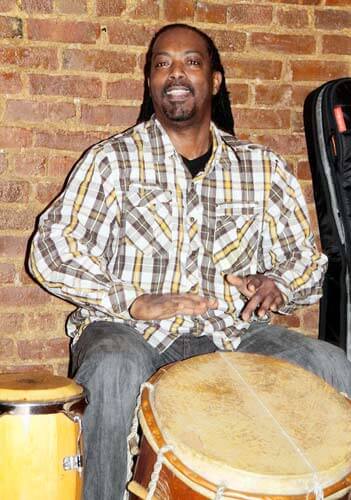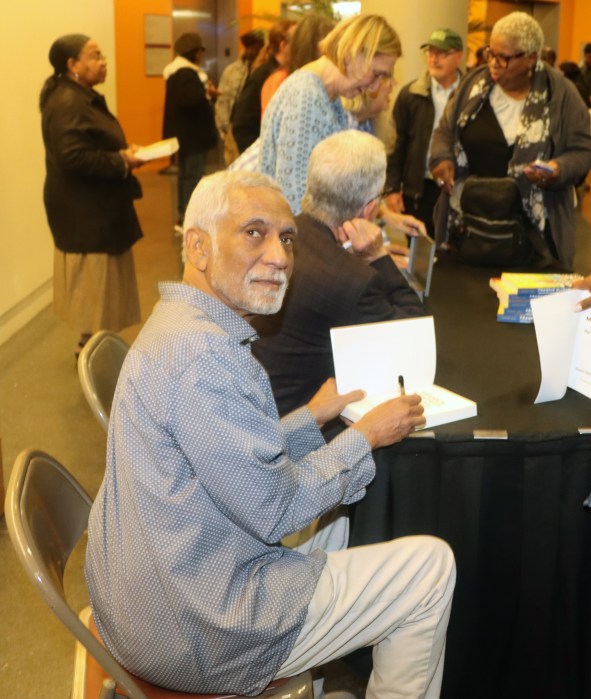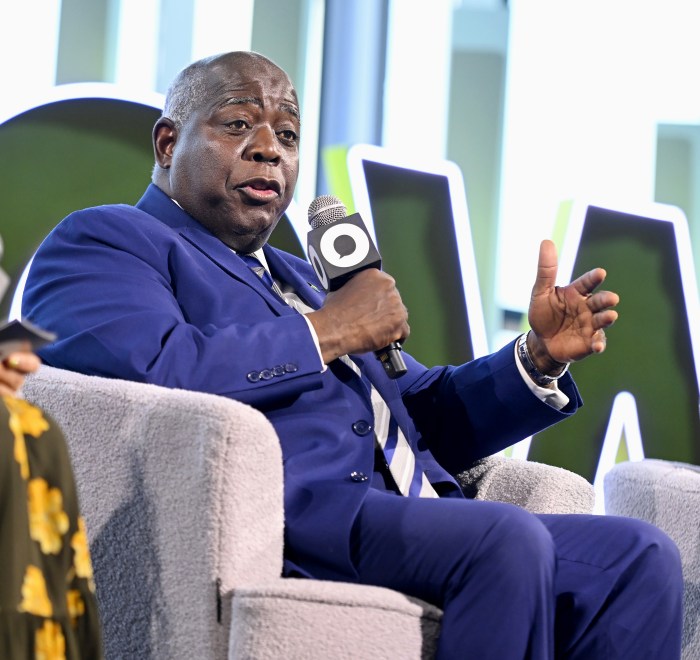Musician and educator James Lovell carries the baton of Garifuna language and music. For the second summer, he is bringing it back to where it began, St. Vincent.
Since July 23, James greets students at Central Leeward H.S. in Peters Hope, 35 minutes from the capital of Kingston.
More than 116 eager Vincentians, ages five and up–the oldest, 72, travel from several villages in the country including Barrouallie, Rose Bank and Layou. Some even rode a bus for two hours from Sandy Bay to attend the 10:00 a.m. – 3:00 p.m. summer workshops of Garifuna language, music, and dance called Habinaha Garinagu Yurumein 2012.
James teaches the workshops’ language, singing, music and drumming components and choreographer Erika Zuniga, who lives in Los Angeles, teaches dance.
When James was asked: Are the students of Garifuna origin? He answered, “We want to assume that they are all Garifuna but because of the history, those that remained–fleeing in the hills–after the expulsion by the British 1797, were forced not to speak the language.”
“They love it!” James said of the enthusiasm and strong interest to learn displayed by the students. “Some left other programs to come here and at least 20 returned from last summer’s cultural camp, held in Kingston.”
Vincentian author Trish St. Hill, who with Lovell is returning Garifuna culture to St. Vincent, negotiated the use of the Peters Hope High School where the students use two classrooms, the auditorium and the playground for instruction and rehearsals.
How are the classes structured? All learn the songs together–it’s one big class, James explained. He writes the words in Garifuna, breaks them into syllables, pronounces and has them repeat. (And repeat, until they get it right.)
Choreographer Zuniga arrived the second week. In the mornings, children continued with song and language. After lunch, Erika taught dance. Meanwhile, two youth and three adults learned drumming with Lovell using the three small primero and three deep-pitched segunda drums he carried from New York. “Next year, we’ll introduce turtle shells,” he said.
“One of my greatest rewards is to see these kids dancing and singing and playing the drums as if they never left Garifuna culture. It’s in their DNA and their psyche,” said Lovell.
Lovell hopes that UNESCO or other groups interested in cultural preservation will fund the program.
The students showcased their progress with a song, dance, and drum program presented in the towns of Barrouaillie, Sandy Bay and lastly in Kingston.
The whole town of Sandy Bay watched, with the Atlantic Ocean as a backdrop, on a stage built by the students who thought “it would be better for the performance.” Residents living on hillsides could see the show from their homes.
An awestruck elder asked Lovell: How did you get these kids to do this in less than a month?
“I just need kids available with an open mind,” Lovell answered, absolutely thrilled with their focus during class and presentation skills to the public.
The teacher was rewarded, too, with the excited audiences’ overwhelmed reception and visible thanks afterwards, applauding passionately. These cultural workshops came home to much appreciation.
Lovell revels in the summer’s efforts, “The townspeople never saw anything like this. And, it gave the children the sparkle of light and hope. They realized they are all special.” Beaming, Lovell said, “They’re talking about ‘when are we coming back?’”
Lovell teaches in Brooklyn during the school year.


























